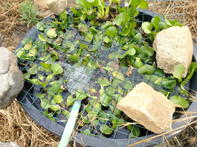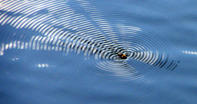Honey bees need water for two main purposes. Firstly, water is used to dilute crystallised honey so that it can be added to brood food. Secondly, honeybees need water to cool their hive.

They do this by fanning over a thin layer of water when the ambient temperature is over 35°C. The evaporation of the water cools down the hot air inside the hive and helps maintain the hive’s humidity to ensure that eggs hatch. In winter, condensation on the inside of the hive should supply enough moisture.
This may often produce too much water, causing dripping. This may kill bees if there is not good ventilation inside the hive. Bees may also need water when transporting the hives over long distances.
How to Feed Water to Bees
Bees do not store water in their hive but need to go out and collect water. If there is no natural water source close to the hive, you need to feed water to your bees. Having clean water nearby can help reduce the energy used by bees to go in search of water. Bees naturally suck moisture from a wet surface such as soil (or even washing drying on a line) rather than from an open water surface.
A container with an area of about 75 cm² (about the size of a 500 g margarine tub lid) per colony should be fine. The landing area needs to be greater than the watering area - for example, a saucer filled with marbles.
Alternatively, provide some sort of floating device or a twig to keep bees from drowning. You can also supply water in a poultry feeder filled with a few stones.
Entrance type feeders may be used, but a communal water site near the apiary could be more suitable. Ensure this source of water is not shared by other animals.
The Best Water Sources for Bees

If bees could order their drinks, they usually prefer water with some salts. For example, they prefer urine or pool water over that of a lake. A recent study showed that bees preferred water with 0.15 – 0.3% salt (NaCl).
This is about 1 teaspoon of non-iodinated salt per 3.5 liters of water. Bees also prefer water that is warmer than 18°C. When deciding on the best water source for bees, it helps to think like a bee. Bees’ eyes (all five of them) are accustomed to detect changes in motion and light levels, but flying fast and high, they might not see possible sources of water.
Bee researchers have found that bees detect water by smell. Water smelling like earth, water plants, rotting plants or even chlorine (swimming pools) are more attractive to bees than ‘clean’ water. These water sources also contain vitamins and micronutrients that can enhance honey bee nutrition.
By Marinda Louw